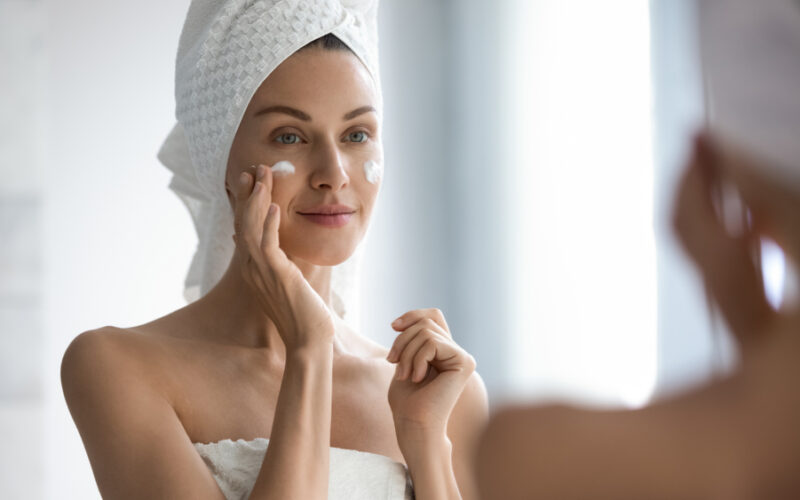Hydroquinone is one of the most effective treatments for hyperpigmentation and dark spots. When used correctly, it can significantly even out skin tone, but improper use may lead to irritation or damage. This guide will help you understand how to use hydroquinone safely and effectively.
Choosing the Right Strength of Hydroquinone
When selecting a hydroquinone product, consider the concentration that best suits your needs. Over-the-counter options (2%) are suitable for mild hyperpigmentation, provide a good starting point for beginners, and carry lower irritation risk, though results may take longer. Prescription-strength formulations (4% and above) are recommended for stubborn discoloration, work more quickly, but have higher irritation potential and require professional monitoring. For those new to hydroquinone or with sensitive skin, starting with a 2% formulation allows you to assess your skin’s response before trying stronger options.
Step-by-Step Guide to Applying Hydroquinone
Following proper hydroquinone instructions ensures both effectiveness and safety. Start by cleansing your face with a gentle, non-irritating cleanser, then pat your skin completely dry, as damp skin can increase penetration and potential irritation. Apply a small amount of hydroquinone cream or serum only to affected areas, using your fingertip or a cotton swab for precision. Allow the product to absorb completely (about 5-10 minutes) before applying a gentle, hydrating moisturizer to minimize dryness and support your skin barrier. Always finish with broad-spectrum sunscreen (SPF 30+) during daytime use, as sun exposure can worsen hyperpigmentation and counteract treatment benefits.
How Often to Use Hydroquinone and For How Long
Establishing the right frequency and duration is essential for safe hydroquinone use. Frequency-wise, begin with once-daily application, preferably at night, and after 1-2 weeks with no irritation, you may increase to twice daily if directed by your dermatologist. If irritation occurs, reduce to every other day until your skin adjusts. Regarding duration, the standard recommendation is to use hydroquinone for no more than 12-16 weeks continuously, with results typically appearing after 4-6 weeks of consistent use. If no improvement is seen after 3 months, consult a dermatologist for alternatives. Following this timeframe is critical, as extended use beyond 3-4 months without breaks may lead to unwanted side effects like exogenous ochronosis or rebound hyperpigmentation.
How to Avoid Irritation and Protect the Skin Barrier
To reduce irritation hydroquinone often causes, focus on strengthening your skin barrier by using a gentle, fragrance-free moisturizer twice daily, especially products with ceramides, hyaluronic acid, or glycerin. Adjust your application technique by starting with every-other-day applications for sensitive skin, considering shorter contact time initially, and always applying to completely dry skin. Manage environmental factors by avoiding excessive heat or humidity, staying hydrated, and being diligent with sun protection. Monitor for early signs of irritation like redness, burning, excessive dryness, itching, or unusual darkening of treated areas. If notable irritation occurs, temporarily discontinue use until your skin calms, then restart with reduced frequency.
What to Pair and Avoid with Hydroquinone
Creating an effective hydroquinone skincare routine requires understanding compatible ingredients and potential problems. Beneficial combinations include niacinamide (which reduces irritation and enhances brightening), sunscreen (essential for preventing further darkening), gentle moisturizers (to support skin barrier), vitamin E (for antioxidant benefits), and retinoids (when prescribed together by a dermatologist). Ingredients to avoid or use cautiously include alpha and beta hydroxy acids (may increase irritation; use at least 12 hours apart), vitamin C (potential oxidation issues; use at different times of day), benzoyl peroxide (can oxidize hydroquinone), harsh cleansers (compromise skin barrier), and fragranced products (may trigger sensitivities). Understanding these interactions helps you build an effective routine while minimizing complications.
When to Take a Break or Stop Treatment
Knowing when to pause or stop hydroquinone is crucial for skin health. Signs it’s time for a break include completing a 12-16 week treatment cycle, achieving desired lightening results, developing persistent irritation, noticing plateaued results, or experiencing unusual darkening of treated areas. Many dermatologists recommend a cyclical approach: 12-16 weeks on treatment followed by at least 12 weeks off, using alternative brightening ingredients during the break (such as kojic acid, azelaic acid, or vitamin C). Consult a dermatologist if you see no improvement after 3 months, experience significant irritation, notice worsening dark spots, before starting a new cycle, or if uncertain about incorporating other active ingredients. Following hydroquinone instructions from your healthcare provider is essential for safe hydroquinone use, particularly with prescription-strength formulations.
Maximizing Results with Complementary Practices
Beyond proper application, several additional strategies can enhance your success with hyperpigmentation fading tips:
Sun protection is non-negotiable
- Apply broad-spectrum SPF 30+ daily, even on cloudy days
- Reapply sunscreen every 2 hours when outdoors
- Wear protective clothing and seek shade when possible
- Consider physical sunscreens (zinc oxide, titanium dioxide) for sensitive skin
Support skin renewal
- Maintain gentle exfoliation during breaks from hydroquinone
- Stay well-hydrated and maintain a balanced diet rich in antioxidants
- Get adequate sleep to support skin’s natural repair processes
- Avoid picking or squeezing blemishes to prevent post-inflammatory hyperpigmentation
Track your progress
- Take weekly photos in the same lighting to objectively monitor improvements
- Keep a log of your routine and any adjustments made
- Note any reactions or changes in skin response
- Be patient, as significant results typically take 2-3 months to develop
With consistent application, proper technique, and patience, hydroquinone can be an effective tool in addressing hyperpigmentation concerns. By following these guidelines for safe hydroquinone use, you can maximize benefits while minimizing potential side effects.
Remember that individual skin responses vary, and consulting with a dermatologist is always recommended, especially when using higher concentrations or if you have persistent concerns.
At Heally, our skin specialists can provide personalized guidance on incorporating hydroquinone into your regimen, monitoring your progress, and developing a comprehensive approach to addressing hyperpigmentation. Schedule a consultation today to create a tailored plan for your specific skin needs.
Sources
NIH: Hydroquinone
Healthline: Everything You Need to Know About Hydroquinone
MedicalNewsToday: What to know about hydroquinone

